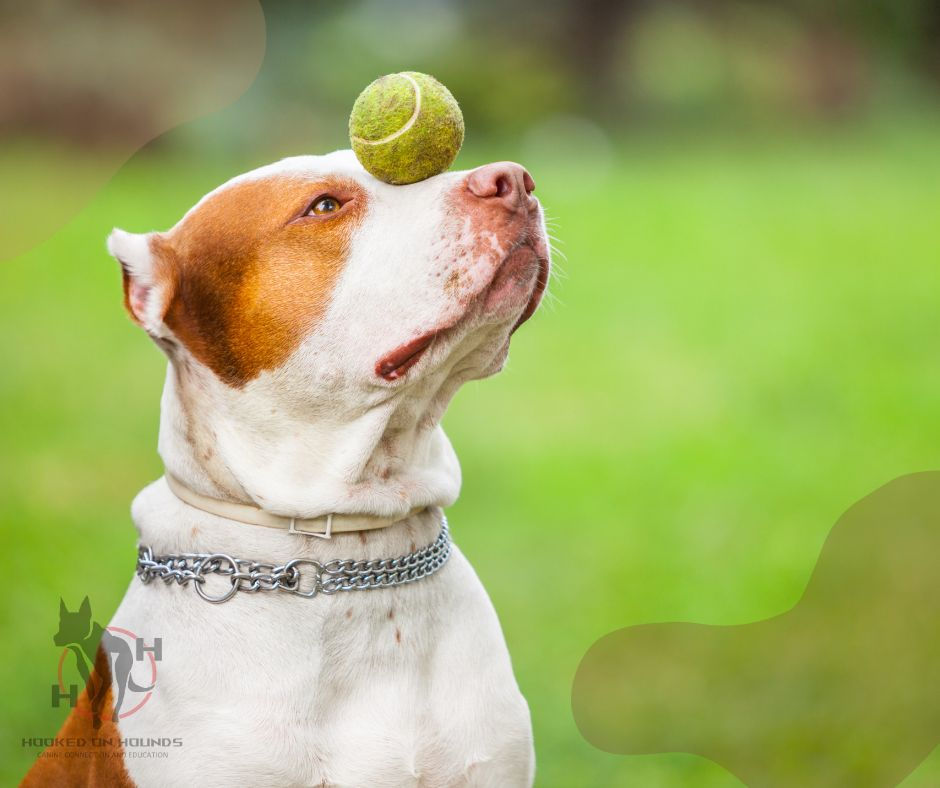Finding Balance: Rethinking Ball Play in Modern Dog Life
- hookedhounds
- Jul 29
- 3 min read
In recent weeks, we’ve observed a number of heated discussions online about the role of ball play in dog welfare. The debate seems to centre around whether fetch—a seemingly simple activity—does more harm than good. As with many topics in the dog world, strong opinions have emerged on both sides, and emotions are running high.
At the heart of this debate lies a broader question: how do we meet the needs of dogs who were bred for very different lives than the ones they now lead? While it's perfectly natural to have differing viewpoints, it's equally important to approach these conversations with empathy and respect—for both people and their dogs.

The Bigger Picture: Looking Beyond the Ball
When assessing the value and risks of ball play, it’s worth stepping back to consider a larger context: the role humans have played in shaping dog breeds. Many of the dogs we share our homes with today were purposefully bred over decades, sometimes centuries, to perform high-drive, high-energy tasks. Herding livestock, retrieving game, protecting property—these were not casual activities, but demanding jobs requiring focus, stamina, and resilience.
To strip these dogs of all physically and mentally stimulating outlets, out of fear they may injure themselves, risks leaving them without any productive way to channel their innate drive. This can lead to frustration, anxiety, and behavioural issues that may carry greater consequences than the risks posed by ball play itself.
It’s Not About Endless Fetch
To be clear, this isn’t a defence of senseless, repetitive ball throwing over long distances. Instead, we’re talking about thoughtful use of ball play—using a dog’s natural chase drive as a tool to mentally engage and fulfil them. The good news is that science supports the idea that short bursts of play can be just as effective, and far less physically taxing, than extended runs.
When combined with training an ‘off switch’—teaching the dog when to wind down and disengage—ball play can become a valuable part of a well-rounded enrichment plan.

Arousal Isn’t Just About the Ball
Another concern often raised is the level of arousal fetch can create in dogs. While that’s a valid point, it’s also worth comparing this to food-motivated behaviours. A highly food-driven dog can exhibit the same signs of overstimulation around meals or training treats as a ball-motivated dog does around play. Yet we rarely question food in the same way.
Instead of generalising all high-arousal responses as problematic, perhaps we need to better understand the individual dog’s thresholds and work to develop control and balance around what excites them—whether it’s food, toys, or social interaction.
We Bred the Drive—Now We Must Honour It
Just as some humans are naturally more active, so too are some dogs—and that’s often by our design. Many working breeds have been specifically selected to be energetic, focused, and eager to engage in high-intensity activities. Expecting them to suddenly lead calm, sedentary lives simply because science warns us of physical wear is both unrealistic and, arguably, unfair.
If you asked most human athletes to give up their sport due to long-term risk, the answer wouldn’t be unanimous agreement. For those individuals, the need to move, perform, and challenge themselves outweighs the risk of injury. In fact, inactivity can often be more distressing.
Dogs, particularly those with similar high drive, are no different. Expecting them to deny their natural instincts—especially those we purposefully bred into them—can be confusing and even detrimental.

A Need for Compassion and Perspective
As science advances and helps us better understand the impact of certain activities, it’s important to recognise that dogs themselves have not had the time to genetically catch up to their evolving roles in society. From hunters to house pets, herders to couch companions—these transitions are profound and take generations to unfold.
In the meantime, our job as caretakers and advocates is to find healthy, individualised ways to meet the needs of the dogs in front of us. Rather than condemning or blindly endorsing specific activities, we should strive for thoughtful, balanced approaches tailored to each dog’s temperament, history, and genetic makeup.
To Conclude
Ball play is neither the villain nor the saviour. Like any tool, its value lies in how it's used. With mindfulness, structure, and understanding, fetch can be a fulfilling part of life for many dogs—particularly those with drive and energy to spare.
Let’s keep the conversation going—but let’s also keep it kind, informed, and focused on what truly matters: the wellbeing of our dogs.


Comments